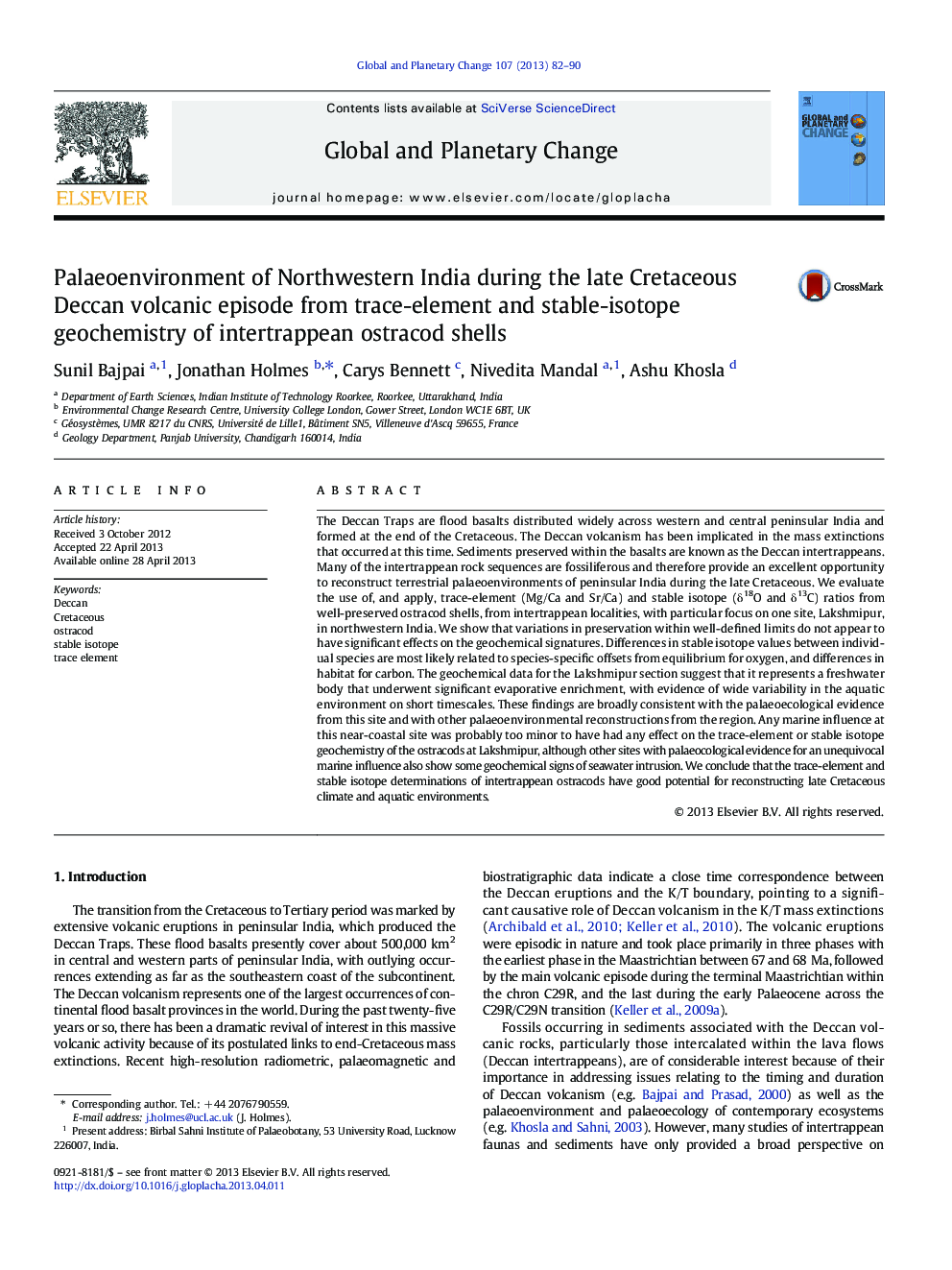| کد مقاله | کد نشریه | سال انتشار | مقاله انگلیسی | نسخه تمام متن |
|---|---|---|---|---|
| 4463509 | 1621674 | 2013 | 9 صفحه PDF | دانلود رایگان |

• We investigate late Cretaceous terrestrial palaeoeonvironments of NW India.
• We undertook geochemical determinations of ostracods from intertrappean sediments.
• The sediments represent a freshwater lake under a semi-arid climate regime.
• Shell preservation did not have a significant effect on the geochemical signatures.
The Deccan Traps are flood basalts distributed widely across western and central peninsular India and formed at the end of the Cretaceous. The Deccan volcanism has been implicated in the mass extinctions that occurred at this time. Sediments preserved within the basalts are known as the Deccan intertrappeans. Many of the intertrappean rock sequences are fossiliferous and therefore provide an excellent opportunity to reconstruct terrestrial palaeoenvironments of peninsular India during the late Cretaceous. We evaluate the use of, and apply, trace-element (Mg/Ca and Sr/Ca) and stable isotope (δ18O and δ13C) ratios from well-preserved ostracod shells, from intertrappean localities, with particular focus on one site, Lakshmipur, in northwestern India. We show that variations in preservation within well-defined limits do not appear to have significant effects on the geochemical signatures. Differences in stable isotope values between individual species are most likely related to species-specific offsets from equilibrium for oxygen, and differences in habitat for carbon. The geochemical data for the Lakshmipur section suggest that it represents a freshwater body that underwent significant evaporative enrichment, with evidence of wide variability in the aquatic environment on short timescales. These findings are broadly consistent with the palaeoecological evidence from this site and with other palaeoenvironmental reconstructions from the region. Any marine influence at this near-coastal site was probably too minor to have had any effect on the trace-element or stable isotope geochemistry of the ostracods at Lakshmipur, although other sites with palaeocological evidence for an unequivocal marine influence also show some geochemical signs of seawater intrusion. We conclude that the trace-element and stable isotope determinations of intertrappean ostracods have good potential for reconstructing late Cretaceous climate and aquatic environments.
Journal: Global and Planetary Change - Volume 107, August 2013, Pages 82–90